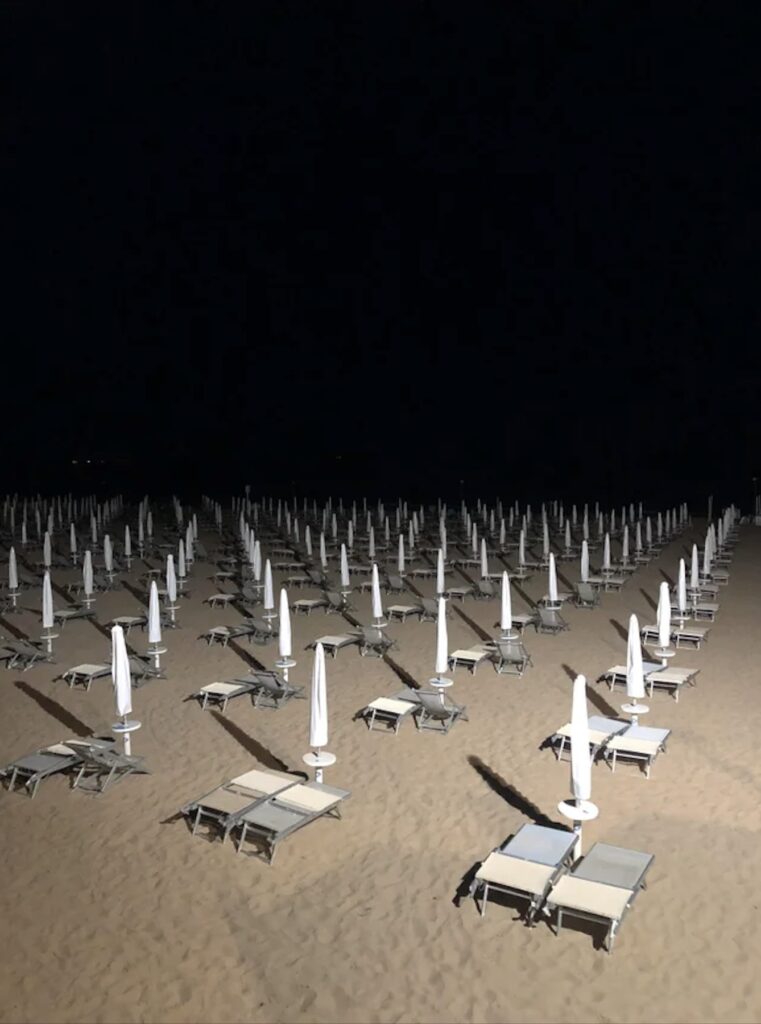In recent years the future has started to look grim. The fate of humanity is more uncertain with the presence of climate change, loss of biodiversity, fear of AI, and other existential threats (BBC News: 2019).
Alongside the rise in existential threats is the rise of nostalgia. Nostalgic movies and shows from people’s childhood and youth are resurfacing (Feldman: 2022). A third growing trend of liminal space photography reflects our increasing nostalgia and existentialism by providing us with gateways into our past as well as predictions of our future.
What is Liminality?
Liminality is a term created by ethnographer Arnold Van Gennep in 1909 to describe the phase in a boy’s life when he becomes a man, as observed by the rites and rituals customary in different societies. The term was then adapted and popularized in 1967 by Victor Turner, who broadened it from what Gennep considered as passing through a phase, to also refer to the suspension between two phases (Neumann 2012: 473-479). Liminality is now understood as the physical or emotional border between two worlds, or the transition between states for an individual, group, or society, or across a single moment, year, or period.
The internet has given birth to a new understanding of liminal spaces as works of art, through photographs that resemble places in transition. These photographs often portray abandoned areas without people and without natural lighting or taken at night. The key idea behind these liminal spaces is that they are purely designed by humans, meant to contain people, but strangely do not. This is why they depict transition.
Connections to the Past
Liminal space photography shows us our past as individuals and as a society. The structures often depicted in liminal space artwork are old and slightly decayed due to being abandoned. This evokes the sense of an era long past.
Photos will touch each individual differently. The picture of an empty home reminds me of my grandparents’ old house because of its shaggy carpeted stairs and dim lighting.

These empty beach chairs invoke memories at the beach with family or friends
These experiences, once filled with life, now invoke just memories. The emotional charge that these pictures hold allows one to connect with their own past, bringing up emotions associated with those memories as well. In this way liminal spaces provide a deeper understanding of our past as individuals.
Nostalgia counteracts loneliness (Feldman: 2022). People may turn to liminal space photography because they are lonely and look for nostalgic images to allow them to confront their emotions. Or people may discover nostalgia simply because the images themselves are lonely and so dispose people to be nostalgic. Either way, nostalgia found in liminal photos provokes the processing of loneliness and ultimately feeling more positive because of it. This contrasts the negative effect of existential dread that is also contained within the images, allowing them to embody the liminality between the two emotions.
Windows into the Future
Modernization has led to the increasing development of man-made risks. Ulrich Beck coined the term “Risk Society,” which posits that there are increasing technological hazards that threaten catastrophe, and that in the face of them, people are becoming increasingly faithless and worried about the state of the world (Beck: 1992). Liminal spaces capture these feelings by displaying modern structures that are lifeless; they allow us to visualize the self-destruction of modernization.
An empty gas station at night shows a product of modern society after it is abandoned.
Liminal spaces reflect our world as both liminal and transitional. Our lives are defined by forward-looking and backward-looking thinking now more than ever. We look to our past to find meaning in our lives and to be in a position to consider our impending future, and we look to our future to comprehend how our society is changing and how we must change to avoid extinction. This is captured in the liminal space, allowing us to understand and feel the emotions in our dual world.

References:
Beck, Ulrich (1992). The Risk Society. California: Sage.
Feldman, David B. (2022, January 7). “Why nostalgia is on the rise.” Psychology Today. Retrieved November 7, 2022, from https://www.scu.edu/illuminate/thought-leaders/david-b-feldman/why-nostalgia-is-on-the-rise.html
Beard, Simon and Holt, Lauren (2019, February 15). “What are the biggest threats to humanity?” United Kingdom: BBC News. Retrieved November 13, 2022, from https://www.bbc.com/news/world-47030233
Meier, Allison (2014, February 10). “An underground pool and more proposed uses for Paris Ghost Stations.” Hyperallergic. Retrieved November 13, 2022, from https://hyperallergic.com/107589/an-underground-pool-and-more-proposed-uses-for-paris-ghost-stations/
Neumann, Iver B. (2012). Introduction to the Forum on Liminality. Review of International Studies, 38(2), 473–479. United Kingdom: Cambridge University Press.